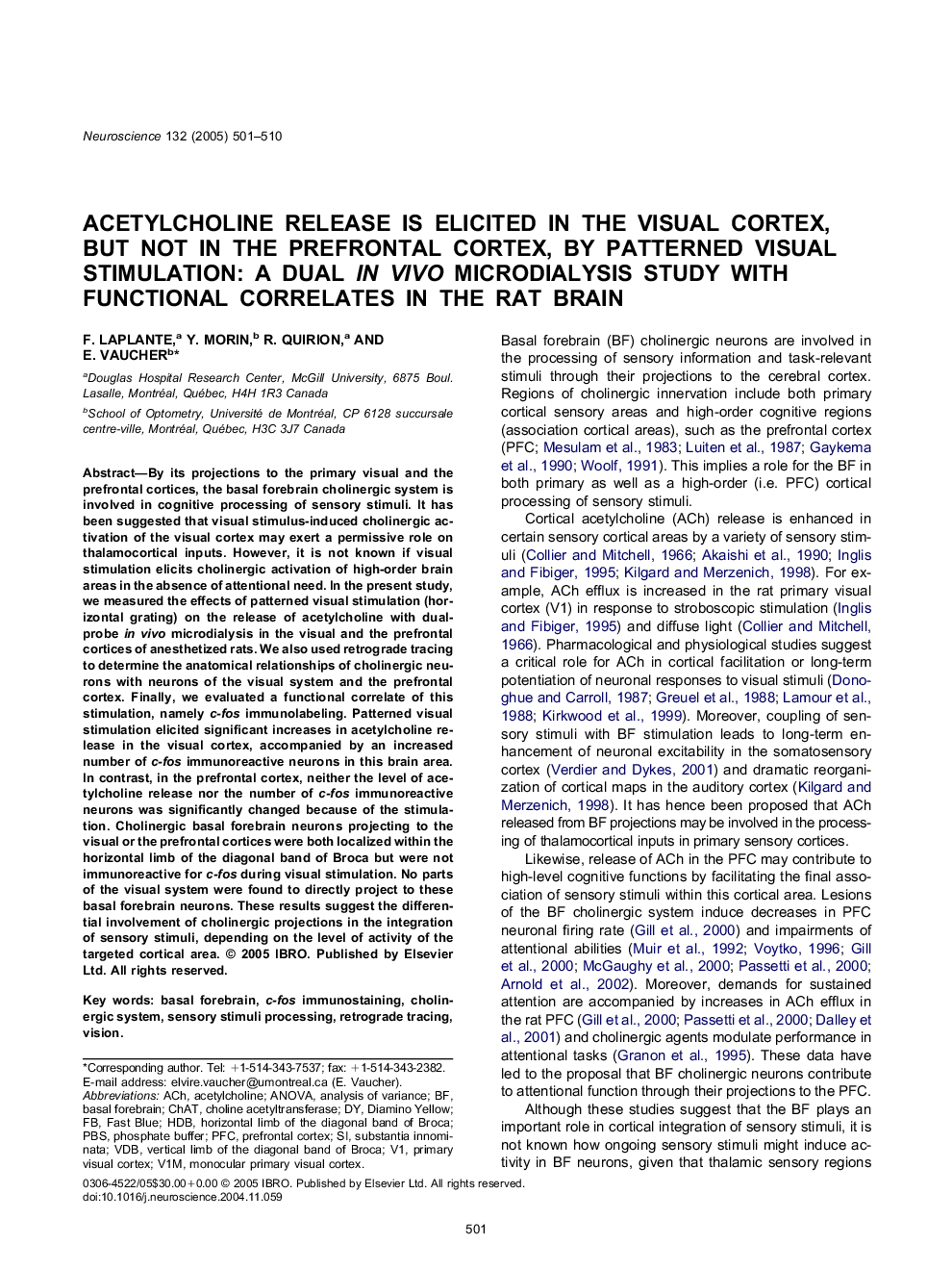| Article ID | Journal | Published Year | Pages | File Type |
|---|---|---|---|---|
| 9425656 | Neuroscience | 2005 | 10 Pages |
Abstract
By its projections to the primary visual and the prefrontal cortices, the basal forebrain cholinergic system is involved in cognitive processing of sensory stimuli. It has been suggested that visual stimulus-induced cholinergic activation of the visual cortex may exert a permissive role on thalamocortical inputs. However, it is not known if visual stimulation elicits cholinergic activation of high-order brain areas in the absence of attentional need. In the present study, we measured the effects of patterned visual stimulation (horizontal grating) on the release of acetylcholine with dual-probe in vivo microdialysis in the visual and the prefrontal cortices of anesthetized rats. We also used retrograde tracing to determine the anatomical relationships of cholinergic neurons with neurons of the visual system and the prefrontal cortex. Finally, we evaluated a functional correlate of this stimulation, namely c-fos immunolabeling. Patterned visual stimulation elicited significant increases in acetylcholine release in the visual cortex, accompanied by an increased number of c-fos immunoreactive neurons in this brain area. In contrast, in the prefrontal cortex, neither the level of acetylcholine release nor the number of c-fos immunoreactive neurons was significantly changed because of the stimulation. Cholinergic basal forebrain neurons projecting to the visual or the prefrontal cortices were both localized within the horizontal limb of the diagonal band of Broca but were not immunoreactive for c-fos during visual stimulation. No parts of the visual system were found to directly project to these basal forebrain neurons. These results suggest the differential involvement of cholinergic projections in the integration of sensory stimuli, depending on the level of activity of the targeted cortical area.
Keywords
PBSPFCVDBHDBAChAcetylcholinehorizontal limb of the diagonal band of Brocavertical limb of the diagonal band of brocaphosphate bufferanalysis of varianceANOVAretrograde tracingFast BlueCholinergic systemprefrontal cortexprimary visual cortexsubstantia innominatabasal forebrainChATVisioncholine acetyltransferase
Related Topics
Life Sciences
Neuroscience
Neuroscience (General)
Authors
F. Laplante, Y. Morin, R. Quirion, E. Vaucher,
